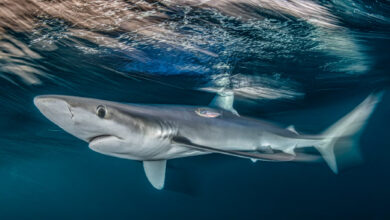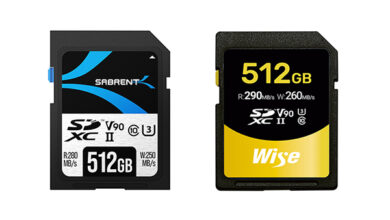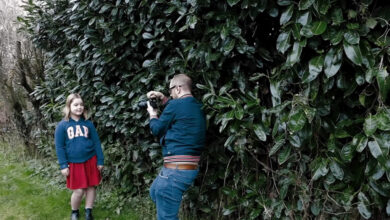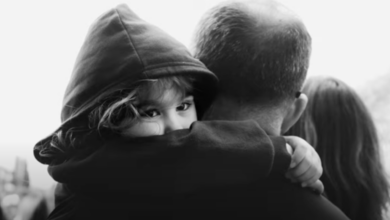How much risk are you willing to take when taking pictures?

Cover photo : ©Abandonednordic
It’s a topic that’s not often tackled, but it’s important in the process of creating images. There are areas where risks must be assessed, assessed and prevented. Taking risks is sometimes necessary, although that includes many different aspects and the stakes are also varied. It mainly depends on your field of view and where you are on your photography journey.
Be prepared
Low on the scale is the risk of simple failure. This can happen when you can’t complete a task, when your photos of an event are disappointing, or they are technically or aesthetically poor quality.
There are many reasons: you forgot something important, you had a technical problem, there was a misunderstanding or simply the customer was not satisfied with the results. Not all photographers have a satisfaction clause in their contract. It can be even more insidious: the customer may be pleased with the results, but you are not.
I happened to take a job, wondering if I could manage it. Originally hired to shoot a series of standard corporate portraits, later also group shots (4-5 people). Nothing much. It’s just a matter of organization and preparation. But things got more complicated when, from group shots, I had to montage all of them in panoramic size. Theoretically, it was possible.
It needs some planning, markings on the floor, consistent lighting, and uses a 50mm lens that shows the least amount of distortion. The photos were spread over two days in an office. If the shooting goes smoothly, there is no guarantee that the group panorama will produce satisfactory results.
It was stressful because I always doubted my editing skills. It takes more work and time than planned. Even the background needs to be retouched. Despite being grey, it has some color variations that need to be balanced, which means making the right choices around everyone.
Finally, even with a 50mm lens, some distortion can still be seen. The distance makes it impossible to use a longer lens. I guess that 80mm would be a better choice. The end result, although embarrassing for me, is customer satisfaction, which is the most important thing. But I felt it was a failure anyway.
The risk here is not overcoming this fear and losing confidence. Knowing our own boundaries allows us to grow within them before pushing them in.
So you must be prepared. In all senses. Mentally and technically.
Don’t just rely on luck. Ewan Lebourdais, a renowned naval photographer who has the official title of Peintre de la Marine in the French Navy, remembers that he was not quite used to using his newly acquired 600mm f/4 lens. when he happened to encounter a nuclear submarine that was turning back to sea. Ouessant Island coast. Even when it helped him win Nikon’s Photo of the Month, he humbly confesses that it was just “beginner’s luck”, mainly because it was so hard for him to recreate it afterwards, only through hard and long work, to progress by improving techniques.
To achieve this goal, it is important to keep improvisation to a minimum. Try to gather as much information as you can about what you intend to shoot. If it’s a wedding, check the venue a few days in advance. Try to figure out if you need a flash, telephoto, wide-angle, whether you’re allowed to bring a tripod, etc.
If you’re planning a scenic trip or a city tour, use apps like Sun Position Sunrise & Sunset, SunCalc, or SunOnTrack to determine the direction of the sun at the time of shooting, as well as Full weather forecast apps or websites like Windyty.
And, since the device doesn’t (yet) magically work, you may need some training before shooting. That’s when the comparison between photography and sports or music becomes relevant.
When your device is at risk
Now, there are domains where your device could be at risk. And I’m not talking about getting a few drops of champagne at the wedding reception.
The natural element is, by far, the biggest problem. In marine photography, for example, saltwater is not tolerant, even with the most rugged of equipment.
Ewan Lebourdais vividly remembers when in a light inflatable boat, accompanied by a group of Navy commandos (the equivalent of Task Force), he recorded an attack against a larger ship. While the soldiers were climbing onto its deck, their boat was swept up by the great waves that regularly engulfed them. The Nikon D5 didn’t die on the spot, but corrosion eventually killed it three weeks later. Fun fact: the action took place on a night so dark that Ewan had to shoot at ISO 100,000.
So, in such cases, it’s safer to use extra protection, such as an underwater case or container, even if you’re not planning on diving. Motorsport photographers know this all too well and don’t hesitate to spend a few cents on an investment that can save an entire day.
You should also purchase insurance for your device. It won’t replace the photos you may have lost on the memory card, but at least you’ll get up faster.
In addition to the physical risks, a more important issue may be your own safety and health.
When it gets serious
Some areas are inherently dangerous for the photographer.
Wildlife photography sounds exciting and is within reach of any patient photographer. But it’s not entirely without danger. Andreas Schmid, a wildlife and underwater photographer, advises beginners to “work your way from simple, basic subjects to more dynamic and demanding animals”. , especially “whenever you’re faced with a large animal, there’s a certain risk involved that something unexpected can happen.” Still, he’s pretty clear: it’s necessary to risk putting yourself in a potentially dangerous situation. “Not in a mindless way, though. (…) It’s important to know how the subject will behave.” It’s important to stay calm, show respect to the animals, get to know them and know when not to cross the line. “Hone your skills before trying to capture the most difficult situations and animals”.
In another popular field, such as urbex, this dangerous concept is also very present.
Steve, aka K9urbex, is pretty clear on that: “Urbex is 90% risky”. It was confirmed by Tanja and Timmo from AbandonedNordic.com: “There are no safety rules for abandoned buildings.”
The question is: is it worth it?
For Andrea Schmid, when underwater, “getting great results requires getting close,” a stance that’s not far from Robert Capa’s famous quote: “If your photos don’t look good, it’s because you’re not close enough.”
For K9urbex, “every photographer should think about what they’re willing to sacrifice for a photo (2 months in hospital for 300 likes?)/” Abandonednordic also emphasizes weighing the risks involved can happen with rewards.
In urbex, the list of potential hazards is impressive.
The most obvious will come from the building itself. Floors can collapse, and ceilings can fall. “Falls are a constant threat, especially when the floor is littered with ‘shards of glass, nails and all sorts of debris,” says AbandonedNordic.
Other hazards are often overlooked, but urbex photographers warn of them: mold is often found in old houses, mines or underground facilities. Asbestos and germs or bacteria from animal feces are other reasons why the air may be fresh or difficult to breathe. Even radiation can be a concern in some areas.
Don’t forget about animals, which are also a possible threat. Snakes, dogs or even owls are known to attack their victims in the face. Insects may disagree with your presence. Check for ticks when you return home. Lyme disease is not pleasant.
Those are the reasons why they do not recommend this hobby to anyone.
Another issue is the legal part. Neighbors often have a negative opinion of urbex photographers, who are sometimes suspected of being thieves or drug users. Practicing common sense should be enough to stop you from taking pictures of military facilities, even abandoned ones or anything near a government facility.
For example, think of the case of Lana Sator.
K9urbex recalls that “nothing justifies your presence.” So he advises being discreet and respectful, a golden rule in urbex. Tanja and Kimmo confirm this: “Never break or take anything, except pictures.”
Ewan Lebourdais admits that “when you’re shooting in three-dimensional, there’s always some risk” and that “going out to sea is always uncertain.” And you don’t have to face a tropical storm or climb Mount Everest to find yourself in a dangerous situation. He emphasized that “a good sailor is one who knows when to give up and turn back. (…) The goal is to never put yourself at risk.”
His advice is “the more predictable and prepared you are, the better.” In the event of a multi-person shooting, brief notification is a very important step. It avoids misunderstandings, sets boundaries, and prevents ambiguity.
Ewan admits he’s not willing to take uncalculated risks. “I think it always ends badly and the pictures may not even be good!”
K9urbex always memorizes a scale, increments from 1 to 10, and tries to stay at 6 or 7. He has always considered urban exploration “a joy, an adventure, a way to pass”. himself”, but he never promoted a “contest”. for a scene that hasn’t been done before because of how dangerous it is.”
Conclusion
Regardless of the shooting situation, anticipation and preparation are crucial. A good understanding of your skills and equipment as well as in-depth knowledge of your subject and environment is essential. It will never eliminate all risks, but it will keep them as low as possible.
Ewan Lebourdais concludes: “Limits are what allow us to avoid risk.” “Becoming a hot-tempered person never lasts long.”
All images are allowed to use.




